In partnership with MPB
DSLR die-hard and mirrorless sceptic, Marc Read, works for used specialist MPB as a pricing expert. So, the company thought it would be interesting to send him off to the British Grand Prix at Silverstone WHEN? with a range of mirrorless set-ups to see how he got on – would he emerge a mirrorless convert, or even more resolute in his preference for the DSLR?
Over to Marc….
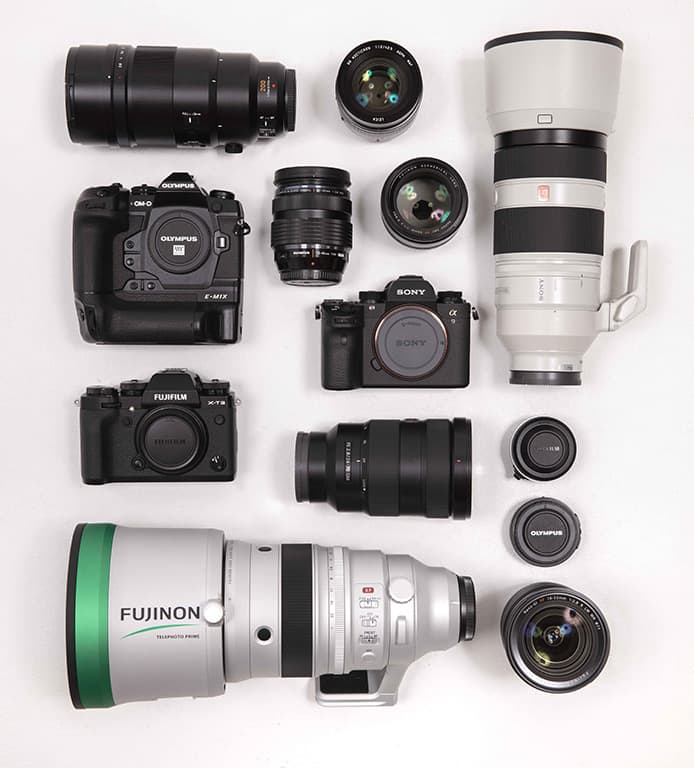
“I mainly photograph wildlife, planes and motorsport. All three require speed and accuracy from a camera, and I’ve always found DSLRs to be perfect for this. Today, all the top manufacturers sell mirrorless cameras, some aimed at my area of photography.
Until recently, the lack of an optical viewfinder, slow frames per second and sluggish autofocus had put me off mirrorless cameras. The only real benefit I could see was the greatly reduced weight. So, off to Silverstone I went.
For each camera, I chose three lenses – a telephoto for the long-distance close-ups, a wide zoom, and a fixed prime for portraits of celebrities. The Fujifilm and Olympus cameras were fairly easy to get to grips with. The Olympus made me feel at ease, as the size and the button layout is very reminiscent of the pro DSLR. The Sony presented me with a steep learning curve, the menu system isn’t very intuitive.
What Marc took to Silverstone
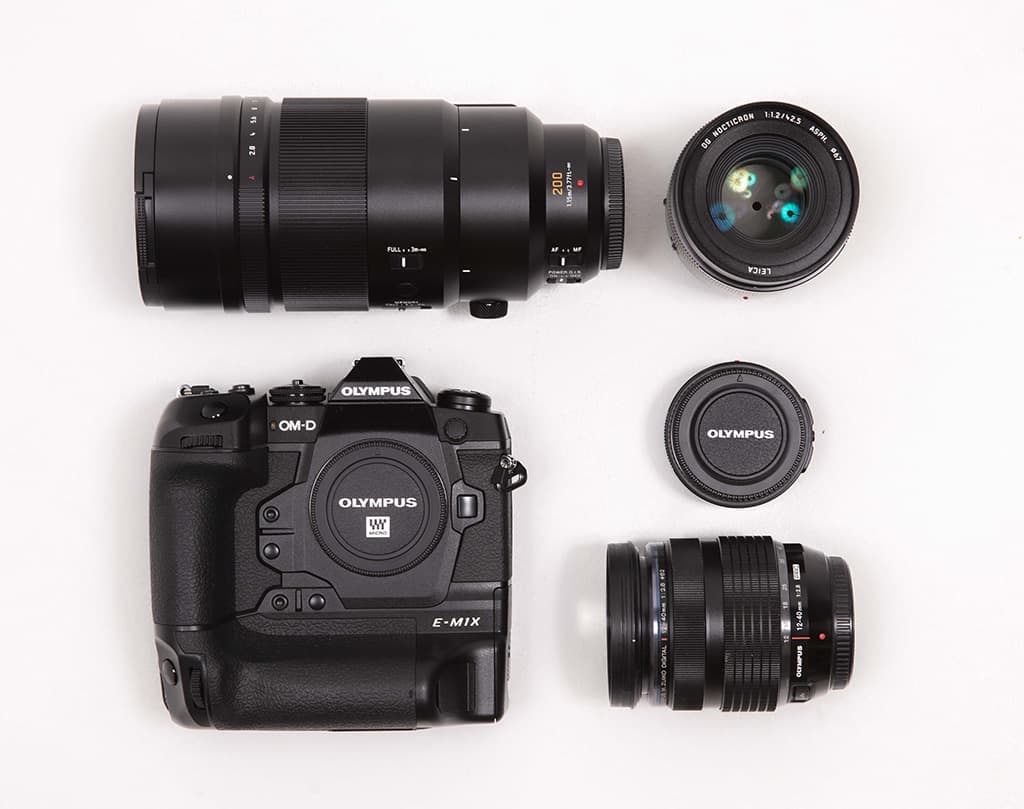
The Olympus set-up
Olympus OM-D E-MX1
Panasonic Leica DG Elmarit 200mm f/2.8 POWER O.I.S. with DMW-TC14 Teleconverter
Olympus M.Zuiko ED 12-40mm f/2.8 Pro
Panasonic Lumix G Nocticron 42.5mm f/1.2 ASPH

The Fujifilm set-up
Fujifilm X-T3
Fujifilm XF 200mm f/2 OIS WR with XF 1.4x WR Teleconverter
Fujifilm XF 16-55mm f/2.8 R LM WR
Fujifilm XF 56mm f/1.2 R

The Sony setup
Sony Alpha A9
Sony FE 100-400mm f/4.5-5.6 GM OSS
Sony FE 24-70mm f/2.8 GM
Sony FE 100mm f/2.8 STF OSS GM
Shooting at Silverstone
“As with any sporting event photography, it’s important to have a plan to make your day out worth your while. This was a bit of a challenge. I’d never been to Silverstone before, and there was only limited information about the best photography spots. I had passes for the inner track, which gave access to some promising locations. There were far smaller crowds too. On a sell-out day, this turned out to be a blessing.
The first area I tried was Formula 3 race, in a grandstand with great views of the action itself. But, the height of the stand meant the photos lacked a certain something. For this race, I used the Olympus OM-D EM1X and Panasonic 200mm f/2.8.
With this camera’s in-built grip and button layout, Olympus are clearly trying to win over pro DSLR users. The Olympus felt familiar to handle, comfortable and easy to get to grips with, as well as boasting an impressive set of features.
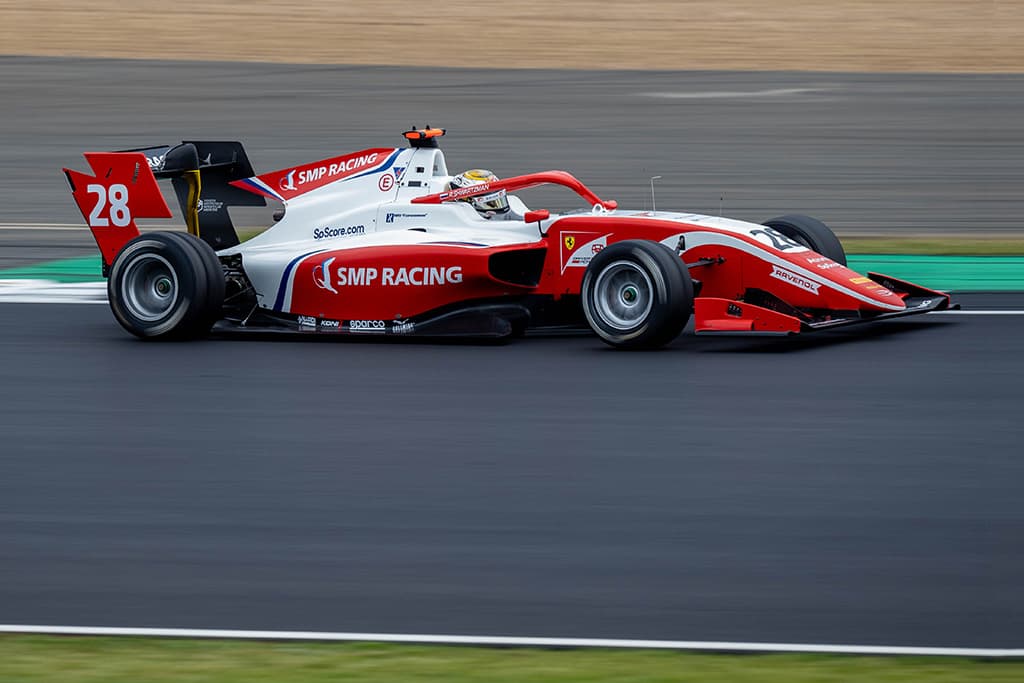
Olympus OM-D E-MX1 + Panasonic Leica DG Elmarit 200mm f/2.8 POWER O.I.S – 1/320 , F/4.5, ISO:100
Before shooting with it, I wasn’t sure how the micro four thirds sensor would perform. But the resulting crop factor actually turned out to be a major benefit. As the small sensor doubles the lens’ focal length, you can use smaller lenses – while achieving the same reach as with a larger full-frame equivalent.
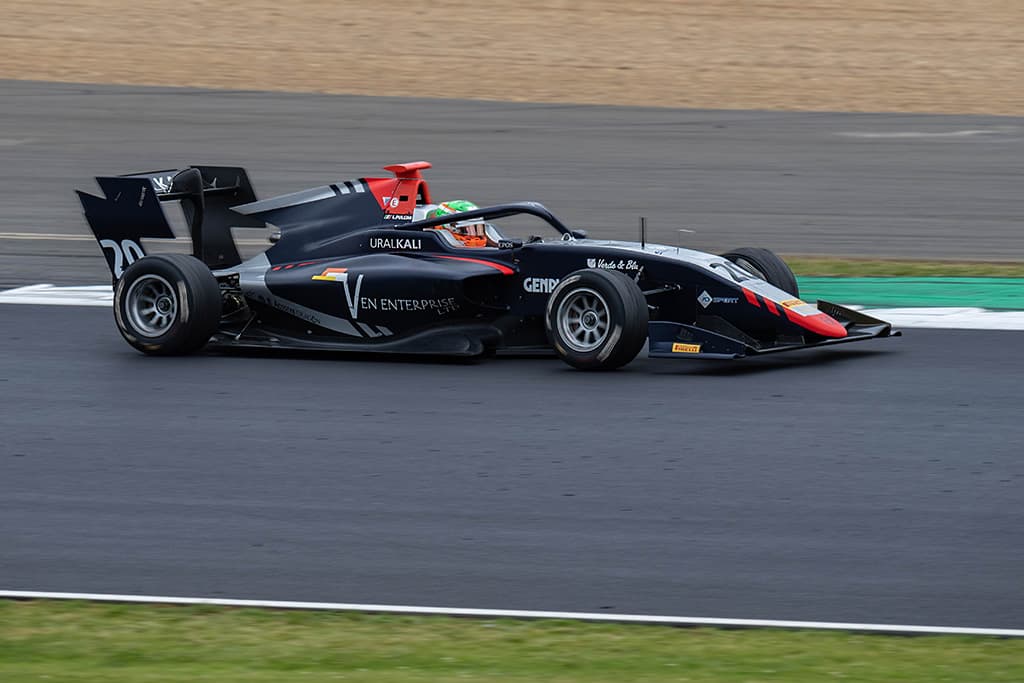
Olympus OM-D E-MX1 + Panasonic Leica DG Elmarit 200mm f/2.8 POWER O.I.S – 1/320 , F/6, ISO:200
Like most things in photography, the cropped sensor’s benefits aren’t without their downsides. The depth of field isn’t as shallow, for example. Though this isn’t a massive issue when shooting motorsport, a shallow depth of field would’ve given me some nicer images throughout the day.
There’s also the issue of literally fitting 20 megapixels into the area of the cropped sensor. This means the pixels themselves are much smaller, and much more tightly packed. Ultimately, this affects image quality and light gathering, leading to grainier images.
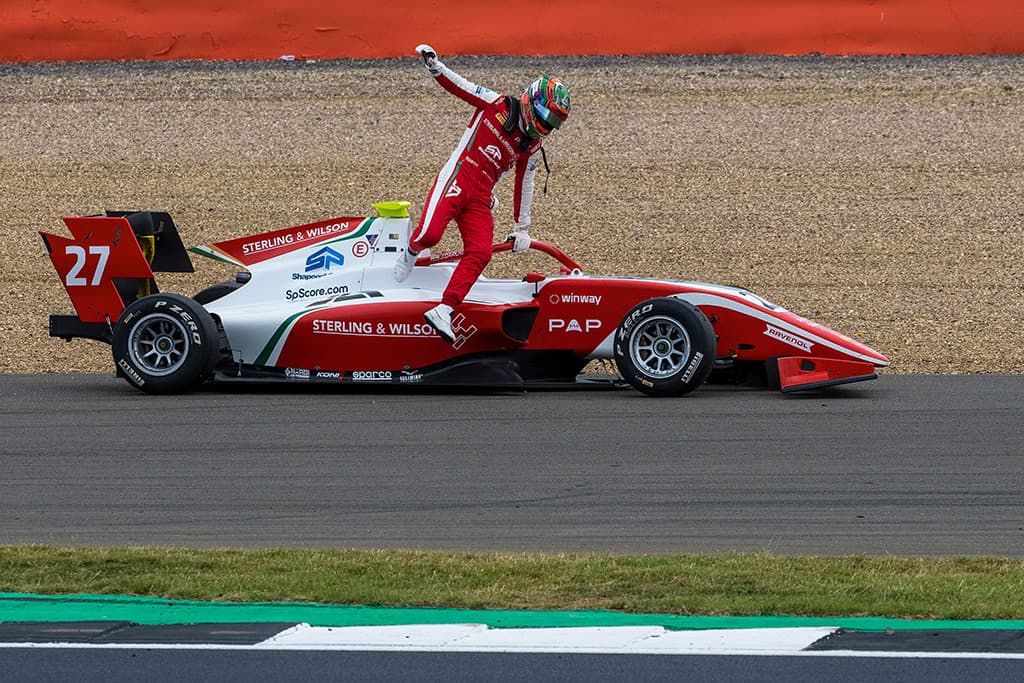
Olympus OM-D E-MX1 + Panasonic Leica DG Elmarit 200mm f/2.8 POWER O.I.S – 1/800 , F/6, ISO:200
Overall, I’d say the Olympus is familiar. As a DSLR shooter, it handled very much like a DSLR. For me, the buttons were in the right place, and it was easy to quickly change settings. But, for some reason, the images just didn’t blow me away. It could’ve been due to the weather, but the hit rate of in-focus shots was lower than I’d hoped.
The images weren’t popping off the screen. After I edited the images, I was much more impressed. While they lacked a bit of depth – and were a bit grainy due to the 200 base ISO – overall, I found them pleasing.
Over to Fujifilm
I wasn’t convinced by the Olympus, so I switched to the Fujifilm X-T3 and the beautiful 200mm f/2 lens. The reduction in size was really noticeable, mainly the depth of the grip. It’s very shallow. With a larger lens attached, the Fujifilm was nowhere near as comfortable as the Olympus.
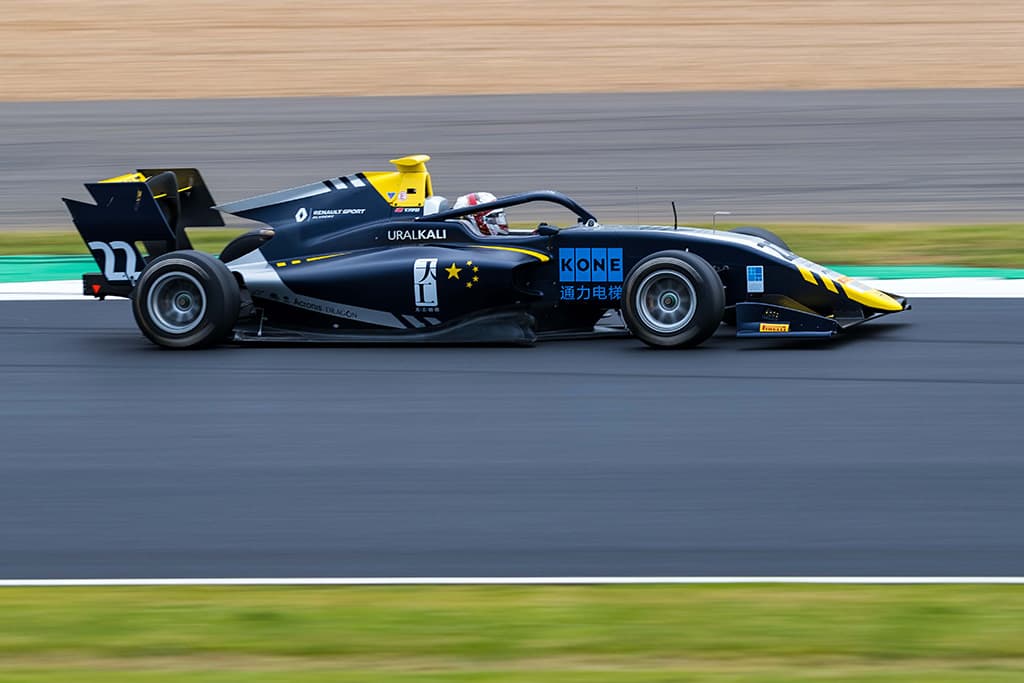
Fujifilm X-T3 + Fujifilm XF 200mm f/2 OIS WR – 1/250, f/4, ISO:80
The button/settings layout took some getting used to on the Fujifilm. The shutter speed, ISO and exposure compensation are all changed via dials on the top of the camera, while the aperture is controlled on the lens itself. I was used to changing modes via one dial on a DSLR, rather than having to change two or three.
It seemed as though I was spending more time looking at the camera to change settings than I was looking through the viewfinder.

Fujifilm X-T3 + Fujifilm XF 200mm f/2 OIS WR – 1/60, f/5.6, ISO:80
After a little while of using the Fujifilm, however, the autofocus speed and the colours were clearly better than the Olympus. The sharpness of the lens started to produce some really pleasing images. From panning, I found my hit rate of in-focus shots was much higher than it was with the Olympus.
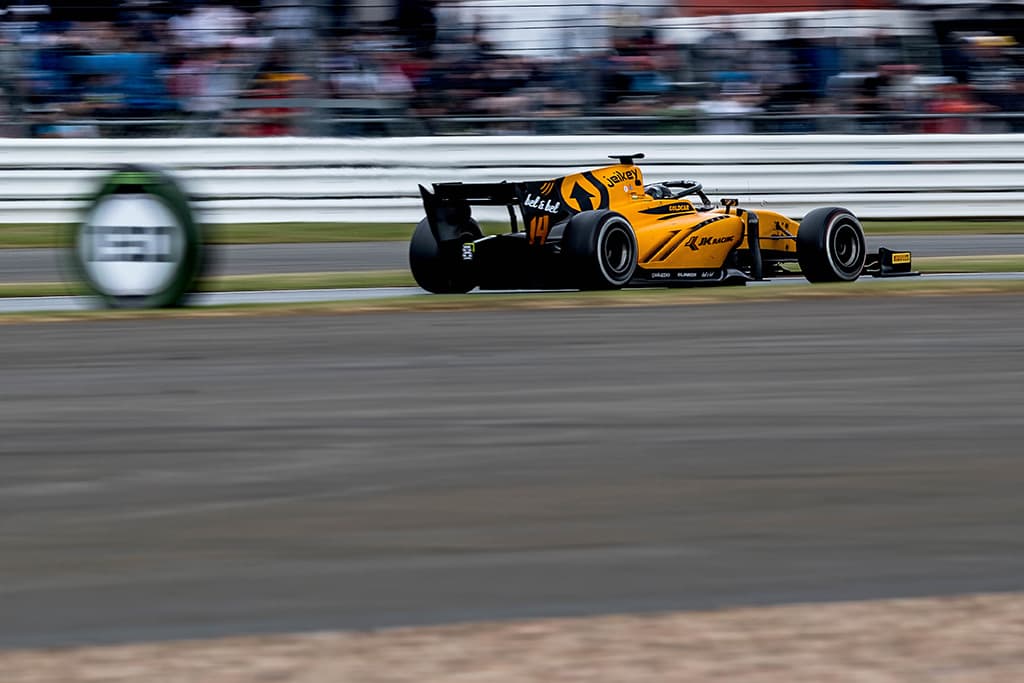
Fujifilm X-T3 + Fujifilm XF 200mm f/2 OIS WR – 1/140, f/5, ISO:80
We opted to miss the F2 race so we could shoot some famous faces. This was easier said than done. The scrum trying to secure autographs meant it was next to impossible to get anywhere near the front. Had I been shooting with a DSLR here, I wouldn’t have managed to get any images – for sure. With the flip-out screen on a mirrorless camera, I was able to hold it as high I could.

Fujifilm X-T3 + FujifilFujifilm XF 56mm f/1.2 R – 1/1250, f/1.4, ISO:80
The images aren’t going to win any awards, but it was great to get some shots of drivers I’ve watched on TV for years.

Fujifilm X-T3 + FujifilFujifilm XF 56mm f/1.2 R – 1/1250, f/1.4, ISO:80
Sony side up
After a while, I found an area to sit for the Porsche Mobil 1, where I picked up the Sony A9. I was initially very sceptical – I wasn’t expecting the Sony to perform that well. I was very wrong. The combination of the 100-400mm, the autofocus and the 20 frames per second was excellent.
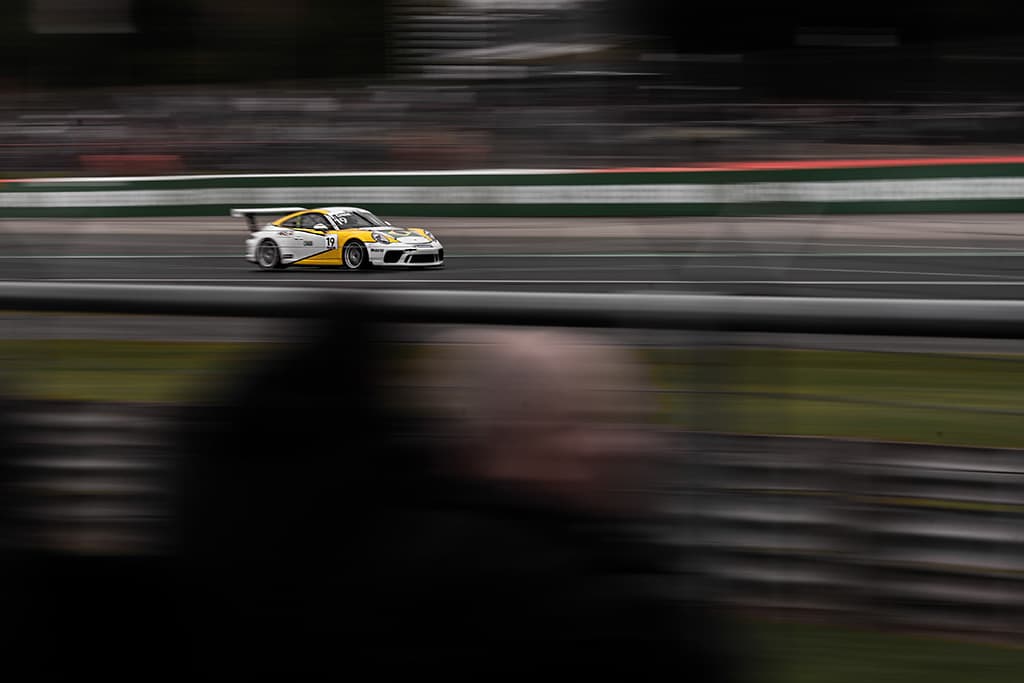
Sony Alpha A9 + Sony FE 100mm f/2.8 STF OSS GM – 1/20, f/22, ISO:100
Straight away after picking it up, I started getting some really nice shots. The electronic shutter, and zero blackout from the electronic viewfinder, was fantastic for panning shots. The button and dial layouts are quite different to other A-series cameras, and it was very easy to quickly access all the controls. The deep grip is comfortable too.
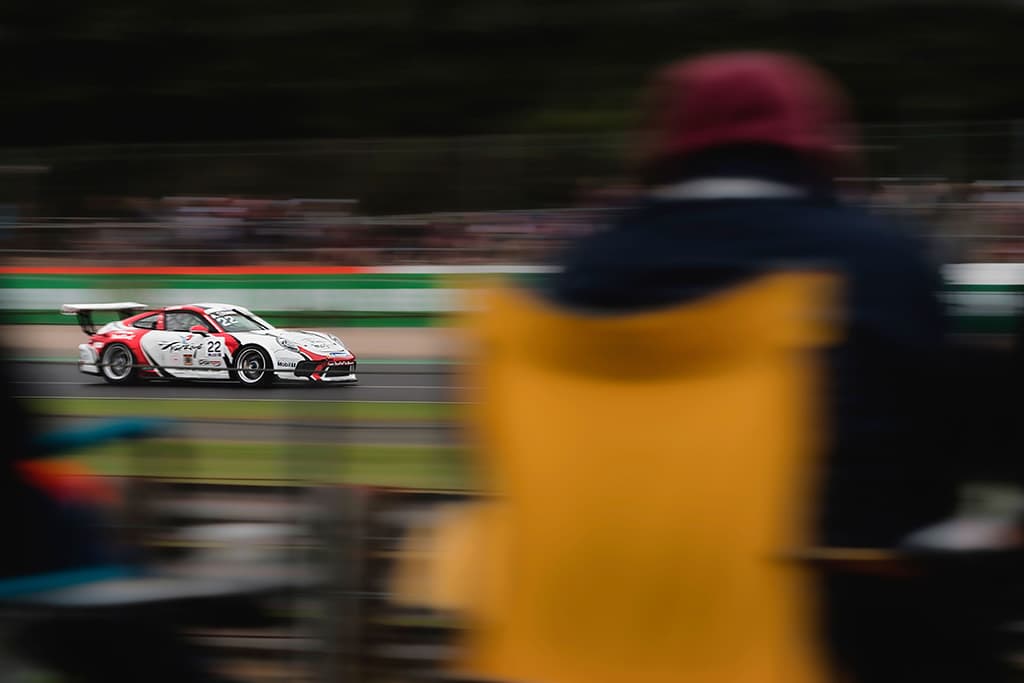
Sony Alpha A9 + Sony Sony FE 100-400mm f/4.5-5.6 GM OSS – 1/50, f/8, ISO:100
The position I’d chosen for the Porsche race was a good spot, but the early birds had already secured the unrestricted view. There were a couple of small areas, which allowed a clear view of the action. For panning shots, I picked the car up at its farthest point and tracked it as it raced past.
Unfortunately, in the spot we had chosen this technique meant I had to pan through people’s heads. Incredibly, the Sony didn’t care about the back of people’s heads. Once locked on to a car, the Sony stayed locked on. This led to some really interesting shots.
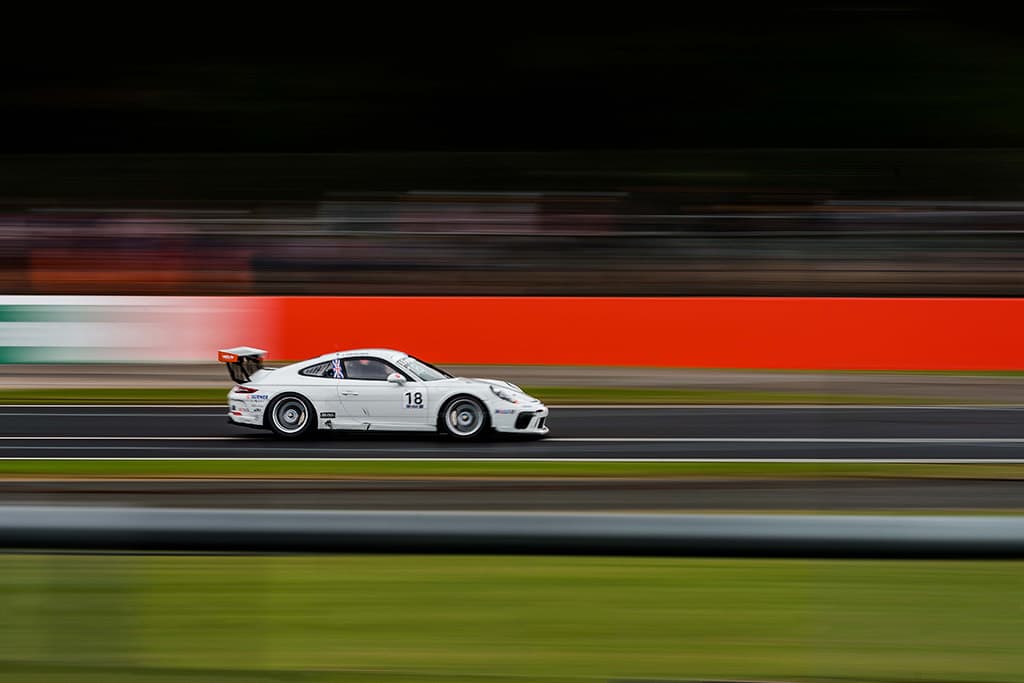
Sony Alpha A9 + Sony FE 100mm f/2.8 STF OSS GM – 1/20, f/16, ISO:100
Now for the start of the main event, the F1. My strategy was to use two setups. After quickly reviewing the images I’d taken so far, I decided that the Sony and Fujifilm would probably give me the best results. I moved around to get as many different shots as possible.
As soon as the race started, I walked down the access road, which was quite empty during the race. The safety fencing wasn’t a big issue here, as it was really close. With a combination of a slow shutter speed and a fast-ish f-stop – f/4 to f/5.6 – the fence wasn’t visible in the shots.
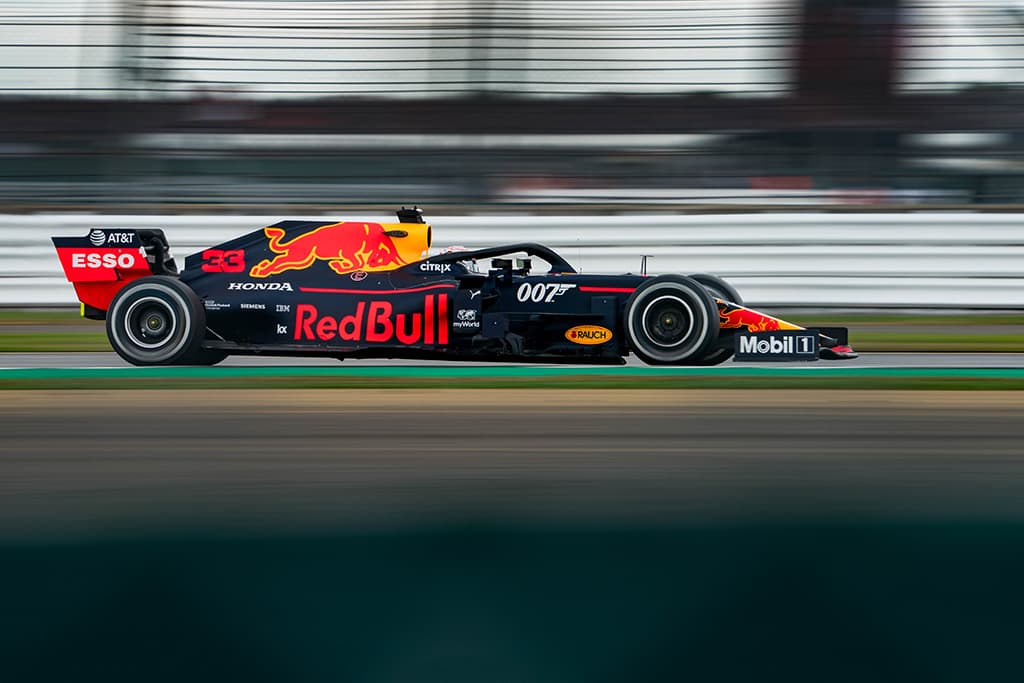
Sony Alpha A9 + Sony Sony FE 100-400mm f/4.5-5.6 GM OSS – 1/160, f/8, ISO:200
The Sony excelled here. With cloud cover and constant action, it coped fantastically well with the exposure and autofocus. Due to the changing conditions and shooting scenarios, I found Sony’s controls much easier to use than Fujifilm’s dials.

Sony Alpha A9 + Sony Sony FE 100-400mm f/4.5-5.6 GM OSS – 1/80, f/22 ISO:200

Sony Alpha A9 + Sony Sony FE 100-400mm f/4.5-5.6 GM OSS – 1/160, f/8 ISO:200

Sony Alpha A9 + Sony Sony FE 100-400mm f/4.5-5.6 GM OSS – 1/160, f/9 ISO:200
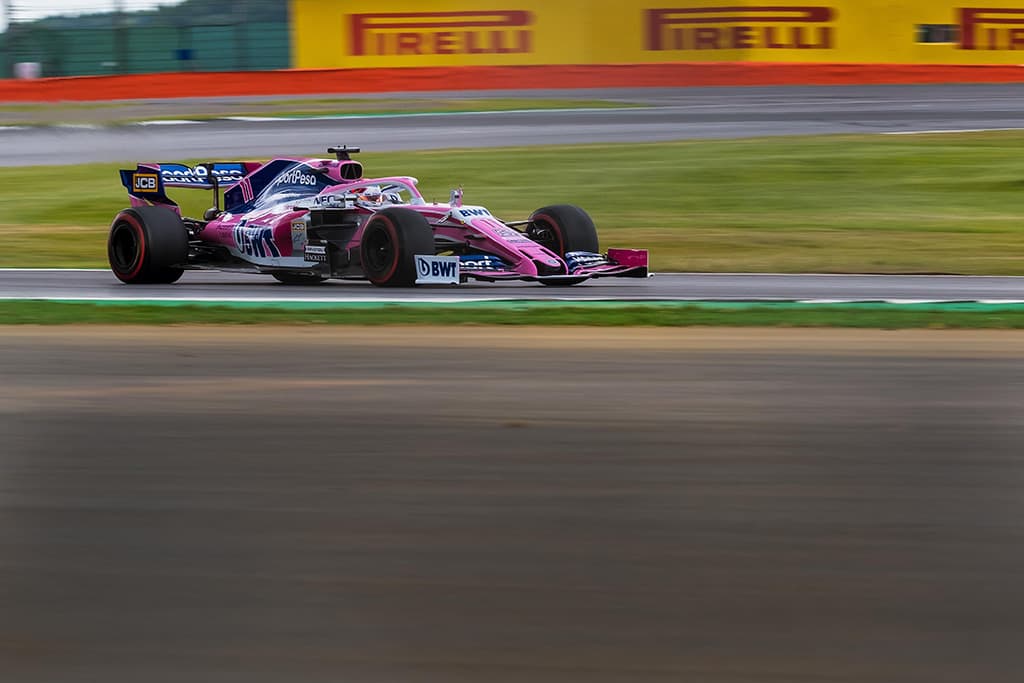
Fujifilm X-T3 + Fujifilm XF 200mm f/2 OIS WR – 1/300, f/6.4, ISO:160
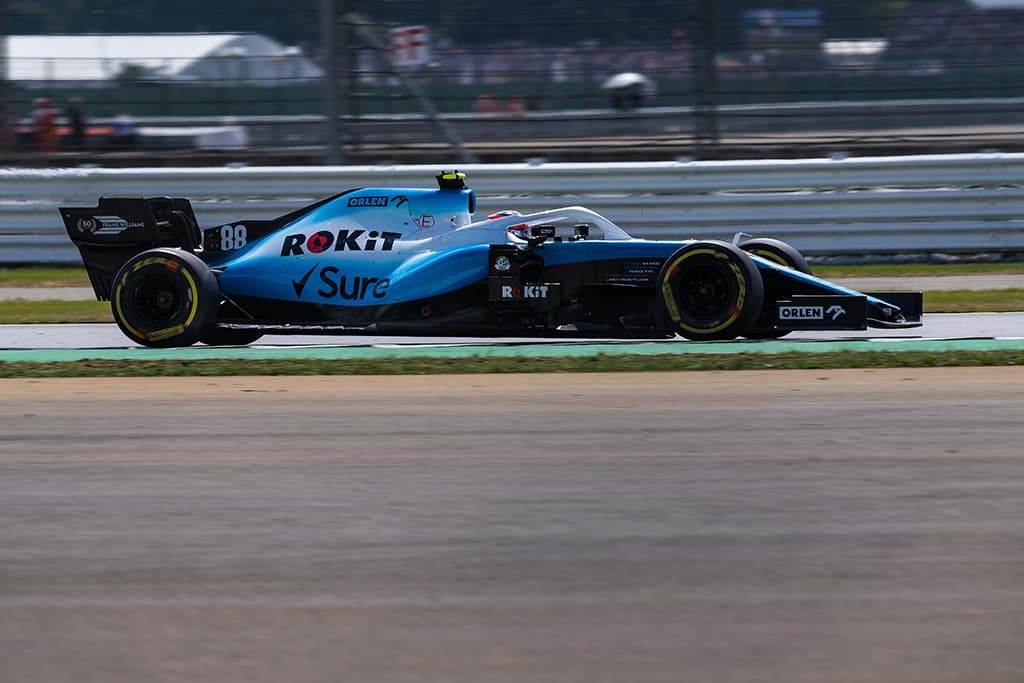
Fujifilm X-T3 + Fujifilm XF 200mm f/2 OIS WR – 1/1700, f/4, ISO:160
As I continued to move around, hunting out different angles, I spotted a couple of other photographers shooting under some of the unsightly green mesh that had lifted in the wind. This gave me a very narrow view of cars coming out of the slow corner loop. I tried the Fujifilm X-T3 and 200mm. But, because of the large aperture, it struggled to lock on focus. The Sony with the 100-400mm, on the other hand, was spot on.

Sony Alpha A9 + Sony FE 100-400mm f/4.5-5.6 GM OSS – 1/800, f/5.6, ISO:200
I managed to get a shot of race leader Lewis Hamilton, with some Union Jacks in the background, with which I was very happy. A little bit further around the corner I found a photography hole with a crane parked in front of it. I could just about get a shot on tiptoes, with the camera above my head. I used the Sony setup, due to the weight, and managed to get a few shots.
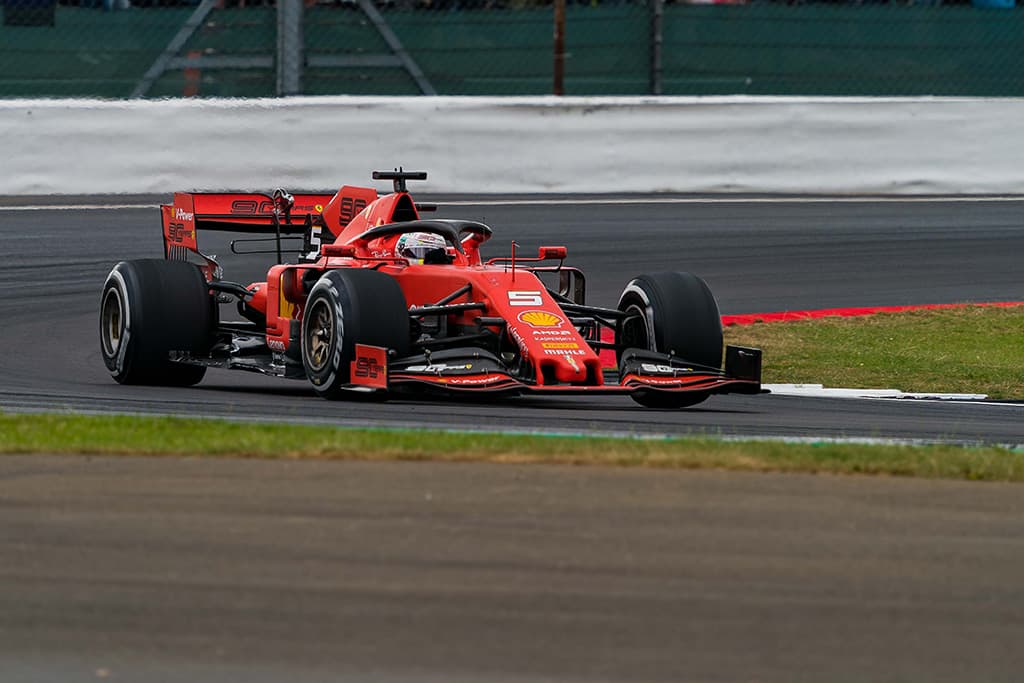
Sony Alpha A9 + Sony FE 100-400mm f/4.5-5.6 GM OSS – 1/800, f/5.6, ISO:200

Sony Alpha A9 + Sony FE 100-400mm f/4.5-5.6 GM OSS – 1/1000, f/5.6, ISO:200
As quickly as that, it was the final lap. Lewis Hamilton won. It had all happened in the blink of an eye, but I’d managed to take around 4000 shots. Without the sound of a shutter, it’s easy to get carried away!

Sony Alpha A9 + Sony FE 100-400mm f/4.5-5.6 GM OSS – 1/1000, f/5.6, ISO:200
During the F1 race, despite having both the Sony and the Fujifilm with me, I used the Sony much more. This was probably a once-in-a-lifetime opportunity, and I was desperate to get the shots I wanted. All three of these cameras are extremely capable. With more time, they each would have produced the shots I craved.
But in these restricted circumstances, where I’d never used any of the cameras before, the Sony immediately filled me with confidence. It just performed straight away. Once I’d returned home and I looked at the shots, it was evident the Sony had a much better hit rate.
It wasn’t a completely fair test, due to the fact that I had different focal lengths on all three setups. But, on the day, the Sony A9 and the 100-400mm were untouchable.
Conclusion
Has this experience changed my view on mirrorless camera? In short, yes. Having used early mirrorless cameras, I’d had the view embedded in me that mirrorless systems aren’t anywhere near the ability of a DSLR for action photography.
As I’ve spoken to many photographers who claim the same. After this weekend, it’s clear my views were outdated. These three cameras are very near the capabilities of modern DLSRs, if not exceeding them.”

Sony Alpha A9 + Sony FE 24-70mm f/2.8 GM – 1/25, f/22, ISO:200







